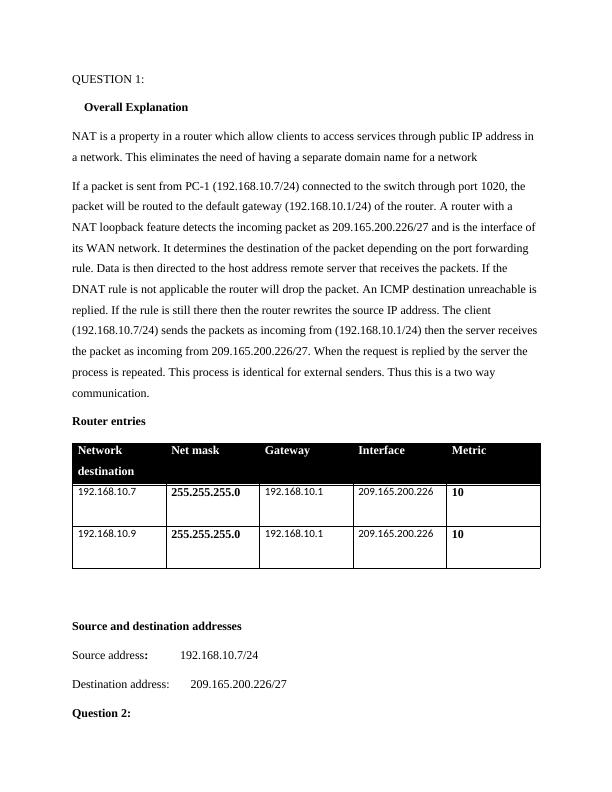Network Assignment: NAT, ARP, Routing Protocols and TCP
Explain how packet is sent to and received from the destination remote server by PC-1 through the steps: 1. source and destination addresses in outgoing packets from PC-1; 2. how router keeps track of incoming packet from remote server and forwards to correct sources with private IP inside the company host by using router’s entries.
Added on 2023-06-07
About This Document
Network Assignment: NAT, ARP, Routing Protocols and TCP
Explain how packet is sent to and received from the destination remote server by PC-1 through the steps: 1. source and destination addresses in outgoing packets from PC-1; 2. how router keeps track of incoming packet from remote server and forwards to correct sources with private IP inside the company host by using router’s entries.
Added on 2023-06-07
End of preview
Want to access all the pages? Upload your documents or become a member.



